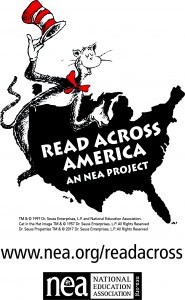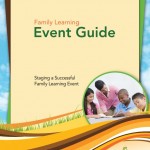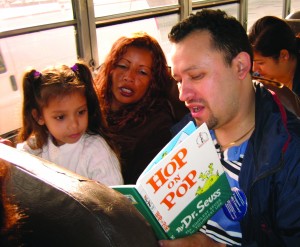This National Reading Month, encourage parents to read aloud to children of all ages
As the calendar turns to March, there is much anticipation! Days are getting longer and warmer as spring nears. And at elementary schools across the United States, students and teachers will eat green eggs and ham, wear striped stovepipe hats, and make gooey green oobleck. March 2 is National Education Association’s Read Across America Day, and many school children will celebrate with the works of Dr. Seuss!

Read Across America Day kicks off National Reading Month. Throughout March, practitioners can celebrate the joys of reading with students and families! As literacy professionals, it is easy for us to get excited about reading books aloud in our classrooms and programs. However, students and families do not always read aloud together at home. The Scholastic Kids and Family Reading Report (2015) revealed that while parents and caregivers often read aloud to young children, the numbers decline sharply as young people grow older. Only 59% of children ages 6 to 8 have an adult read to them at home three or more days per week; this number drops to 29% for children ages 9 to 11.
National Reading Month presents an opportunity to remind parents and caregivers to read with children of all ages at home. Here are some ideas for celebrating National Reading Month while focusing on the importance of reading aloud together.

- Host a family literacy event.
- Model for parents and caregivers how to read aloud books with their children. Focus on an interactive read-aloud that shows parents how to have conversations around books. NCFL offers a free Family Learning Event Guide to help with planning.
- Issue a reading challenge. Choose a short chapter book that is suitable for your audience and encourage everyone to read together. To kick-off Parent and Child Together (PACT) Time®, ask trivia questions about the book and give away prizes to encourage everyone to participate. Then lead a brief discussion of the book.
- If your program includes English learners or emergent adult readers, use Parent Time to model reading with wordless picture books. Teach them how to create their own stories to match the pictures. Provide them with opportunities to practice with one another so that they feel confident in reading with their children at home.
- Partner with your local library. Plan for families to visit the library together. Everyone can sign up for library cards, take a tour, and take part in a read-aloud with the librarian.
- Consider a Family Service Learning project that focuses on reading. Families could practice reading books aloud and then share them with patients at a local children’s hospital or nursing home.

As practitioners, let’s work together during National Reading Month to spread the word: Children of all ages love reading aloud with their families.